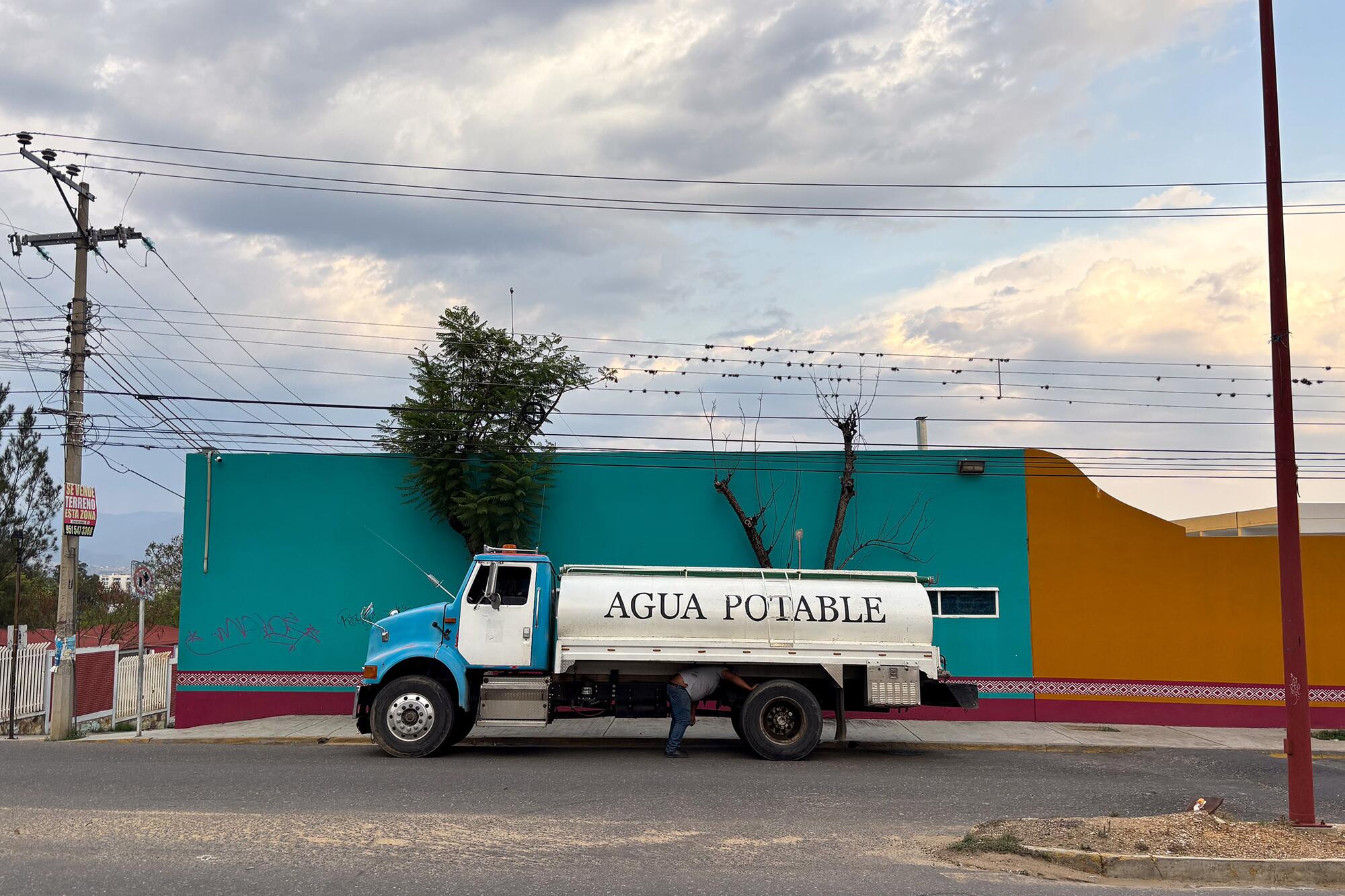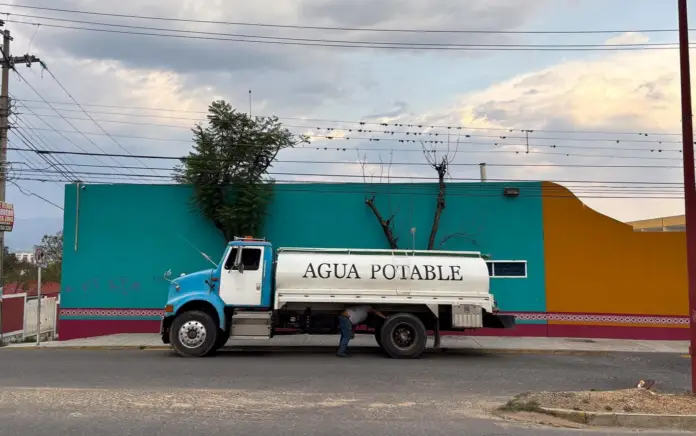May has begun, and in Mexico, people are looking to the sky trying to predict what the rainy season will be like, which is expected to begin in just a few weeks. Although the first rainfall has already arrived in some regions, everything indicates that this year’s season will be just as dry as the previous one. According to the National Water Commission, 2023 was the driest year on record for the country, and the slight increase in rainfall in 2024 was not enough to meet the population’s water supply needs.
Despite not crossing the national water stress threshold established by the UN, per capita water availability has steadily declined in recent decades, reaching 3,692 cubic meters in 2024. However, the analysis by state reveals enormous inequalities. While Chiapas and Tabasco enjoy a water availability exceeding 15,000 cubic meters per inhabitant per year, states such as Mexico City, Baja California, and Nuevo León fall short of 500 cubic meters, placing them in conditions of severe water scarcity. The most pressing case is the Valley of Mexico, which barely reaches 140 cubic meters, experiencing extreme water stress.
The trend toward water scarcity is a global issue, but in Mexico, beyond climatic factors, the water crisis is rooted in a concession system that has prioritized private interests over the human right to water. “There is a hydrocracy, water millionaires, businessmen who control the resource,” says Ricardo Bando Ramírez, founder of the Escuelita del Agua (Little Water School), a community-driven, grassroots training space that seeks to strengthen community water management, defend the right to water, and expose the injustices of the concession model.
Hidden Privatization
The current water management model in Mexico dates back to the 1990s, when the urgency of signing the North American Free Trade Agreement (NAFTA) with the United States and Canada pushed Mexico to implement a series of structural reforms aimed at attracting foreign investment. “In order to sign, Mexico had to amend many laws and even the Constitution to allow the free entry of foreign companies,” explains Bando.
This allowed for the creation of a legal framework aimed at offering comparative advantages to foreign investors, establishing tax, labor, and environmental deregulation for them. “Foreign companies enjoyed lower tax rates or even exemptions, could pay their workers lower wages, and were free to pollute with impunity without any consequences,” explains Bando, referring to measures that “were supposedly beneficial to the country but ultimately turned out not to be so.”
In March 2021, coinciding with the celebration of World Water Day, the United Peoples of the Cholulteca and Volcanoes Regions peacefully occupied the Bonafont plant to demand its permanent closure.
This context led to the formation of the concession system, allowing private companies, many of them transnational, to do business with water. The defense of this resource as a human right and the fight against its commercialization began to emerge throughout the country. In the state of Puebla, for example, the United Peoples of the Cholulteca and Volcanoes Regions were formed. They define the concession system as “a disguised, covert, and permitted privatization in all cases” and point to the case of Bonafont, a bottling subsidiary of Danone, as an example of “the state’s interest in collaborating with private companies to profit from and traffic water.”
The bottling plant’s arrival in the Cholula Valley in the late 1990s was felt by local communities, who soon began to notice a progressive decline in the water levels in their wells and springs. After more than two decades of protests, the discontent of the citizens coalesced into the organization known as the United Peoples of the Cholulteca and Volcanoes Region. On March 22, 2021, coinciding with World Water Day, they peacefully occupied the Bonafont plant to demand its permanent closure. Eleven months later, the National Guard and state police evicted the activists, and Bonafont, although it regained control of the plant, decided not to resume extraction and bottling activities. In September of that same year, the company announced that the facilities would reopen solely as a warehouse and distribution center, using water from non-local sources.
This experience spurred the articulation of similar resistance movements across the country, leading to the creation of the National Assembly for Water and Life in 2022. This is a space for coordination between communities, organizations, and collectives that defend water and land against dispossession and privatization. From Jalisco, the collective Un Salto de Vida (A Salt of Life) participates, asserting that all types of companies profit from water exploitation. “In the case of Jalisco, the banks currently hold the most concessions,” explains Sofía Atahuelpa, a member of the collective, citing names such as Canada’s Scotiabank and the Spanish banks Banco Santander and Bancomer, owned by BBVA. However, the list of these concessionaires also includes food, soft drink, automotive, and mining companies, among others.
The Business of Scarcity
“They monopolize large agricultural concessions, extract water, and then sell it,” Atahuelpa says of the so-called water tanker trucks, which have become the only option for accessing water in many regions of the country. According to the most recent National Census of Municipal Governments, published by INEGI in March 2024, although 99% of municipalities offer drinking water service through the public network, it should be noted that few municipalities offer a continuous water supply, with water rationing being the most common, which makes citizens dependent on the storage capacity of their water tanks. Brands such as Rotoplas and Aquaplas dominate the market, and their tankers, located on rooftops throughout the country, are now part of the landscape.
More than one million homes in Mexico rely on private water delivery services on a regular basis, especially due to seasonal variations that affect water availability and lengthen the delivery periods established by municipalities.
“The reality is as absurd as the fact that we have a recognized human right to water and sanitation, but we don’t have a secondary law that regulates it,” says Ricardo Bando.
While certain areas enjoy almost constant availability, others survive on mere liters per inhabitant per day, deepening the gaps between urban and rural sectors, between social classes, and between those who can afford a tanker truck, whose price for 12,000 liters ranges between 1,000 and 2,000 pesos (one hundred euros), and those who can’t.
“Water continues to be controlled by the government and handed over to companies,” says Argelia Betanzos, of the Mazatec Women’s Collective of Eloxochitlán. From rural communities like hers, they have seen not only how their water sources have been plundered, expropriated, and sold, but also how the authorities have criminalized their own management systems. “They have criminalized our community practices, simply because we have resisted their activities,” Betanzos asserts.
A law that does not recognize the human right to water
The Mexican Constitution has recognized the human right to water since 2012. This amendment decreed that the Congress had 360 days to issue a new Water Law. However, more than a decade later, that law is still pending, and the current National Water Law (LAN), which dates back to 1992, does not effectively guarantee it. “The reality is as absurd as the fact that we have recognized a human right to water and sanitation, but we do not have a secondary law that regulates it,” says Ricardo Bando, emphasizing that “the right to water, being a fundamental right, cannot be in the hands of the market, nor be subject to the paradigm of public-private agreements, because that only generates corruption, high water service costs, and land grabbing.”
The National Coordinator “Water for All, Water for Life,” of which the Little Water School is a member, promoted a citizen initiative for a General Water Law: “It was a fairly long process that took us many years because we held forums, discussions, seminars, we had to present almost 200,000 signatures, and we finally presented it on February 4, 2020,” explains Bando. Following this proposal, a consensus process was launched in the Congress of the Union, and even in the midst of the pandemic, virtual working groups were organized with legislators to develop a consensual bill proposal. “At the last minute, the process was frozen,” states Bando, who adds that, although he continues to work with some members of Congress trying to promote regulations that guarantee the right to water, it is widely known that the government has no intention of enacting a general water law.

Source: elsaltodiario




